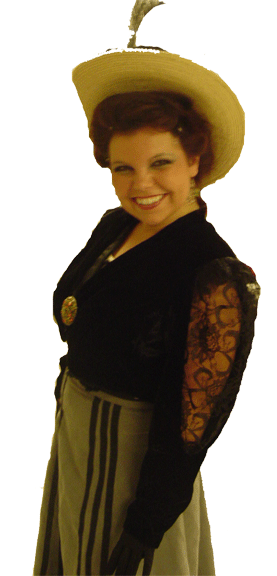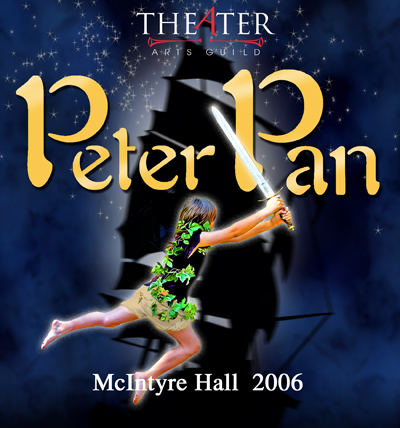……..they first came for the Communists,
and I didn’t speak up because I wasn’t a Communist.
Then they came for the Jews,
and I didn’t speak up because I wasn’t a Jew.
Then they came for the trade unionists,
and I didn’t speak up because I wasn’t a trade unionist.
Then they came for the Catholics,
and I didn’t speak up because I was a Protestant.
Then they came for me —
and by that time no one was left to speak up.
РPastor Martin Niem̦ller
In reference to WWII
Who Attempts Censorship?
From the American Library Association
In most instances, a censor is a sincerely concerned individual who believes that censorship can improve society, protect children, and restore what the censor sees as lost moral values. But under the First Amendment to the United States Constitution, each of us has the right to read, view, listen to, and disseminate constitutionally protected ideas, even if a censor finds those ideas offensive.
How Do Censors Justify Their Demands That Material Be Suppressed?
Censors might sincerely believe that certain materials are so offensive, or present ideas that are so hateful and destructive to society, that they simply must not see the light of day. Others are worried that younger or weaker people will be badly influenced by bad ideas, and will do bad things as a result. Still others believe that there is a very clear distinction between ideas that are right and morally uplifting, and ideas that are wrong and morally corrupting, and wish to ensure that society has the benefit of their perception. They believe that certain individuals, certain institutions, even society itself, will be endangered if particular ideas are disseminated without restriction. What censors often don’t consider is that, if they succeed in suppressing the ideas they don’t like today, others may use that precedent to suppress the ideas they do like tomorrow.
What Are The Most Frequently Censored Materials?
Throughout history, books have been challenged for many reasons, including political content, sexual expression, or language offensive to some people’s racial, cultural, or ethnic background, gender or sexuality, or political or religious beliefs. Materials considered heretical, blasphemous, seditious, obscene or inappropriate for children have often been censored.
Since the dawn of recorded human expression, people have been burned at the stake, forced to drink poison, crucified, ostracized and vilified for what they wrote and believed.
WHAT WIKIPEDIA IS NOT
Wikipedia and Censorship
Wikipedia may contain content that some readers consider objectionable or offensive. Anyone reading Wikipedia can edit an article and the changes are displayed instantaneously without any checking to ensure appropriateness, so Wikipedia cannot guarantee that articles or images are tasteful to all users or adhere to specific social or religious norms or requirements. While obviously inappropriate content (such as an irrelevant link to a shock site) is usually removed immediately, some articles may include objectionable text, images, or links if they are relevant to the content (such as the article about pornography) and provided they do not violate any of our existing policies (especially Neutral point of view), nor the law of the U.S. state of Florida, where Wikipedia’s servers are hosted.
Wikipedia – Author would like to point out that Wikipedia is currently the largest single repository of public accessed and updated information (Google only directs to information sources, it does not contain it with user input). And please note, Wikipedia is not censored. It is regarded by many as the “real” source for the facts.
LINKS:
Censorship – American Civil Liberties Union
Excerpt: Censorship, the suppression of words, images, or ideas that are “offensive,” happens whenever some people succeed in imposing their personal political or moral values on others. Censorship can be carried out by the government as well as private pressure groups. Censorship by the government is unconstitutional.
Censorship – Global Internet Library Campaign
Excerpt: Censorship — the control of the information and ideas circulated within a society — has been a hallmark of dictatorships throughout history. In the 20th Century, censorship was achieved through the examination of books, plays, films, television and radio programs, news reports, and other forms of communication for the purpose of altering or suppressing ideas found to be objectionable or offensive. The rationales for censorship have varied, with some censors targeting material deemed to be indecent or obscene; heretical or blasphemous; or seditious or treasonous. Thus, ideas have been suppressed under the guise of protecting three basic social institutions: the family, the church, and the state.
DEFINITIONS OF CENSORSHIP
Censor: One who supervises conduct and morals: as a) an official who examines materials (as publications or films) for objectionable matter; b) an official (as in time of war) who reads communications (as letters) and deletes material considered harmful to the interests of his organization. Censorship: The institution, system or practice of censoring; the actions or practices of censors; esp : censorial control exercised repressively.
–Merriam Webster’s Collegiate Dictionary
Censorship: The use of the state and other legal or official means to restrict speech.
–Culture Wars, Documents from the Recent Controversies in the Arts, edited by Richard Boltons
In general, censorship of books is a supervision of the press in order to prevent any abuse of it. In this sense, every lawful authority, whose duty it is to protect its subjects from the ravages of a pernicious press, has the right of exercising censorship of books.
–The Catholic Encyclopedia (a publication of the Catholic Church)
What Is Censorship? Censorship is the suppression of ideas and information that certain persons — individuals, groups or government officials — find objectionable or dangerous. It is no more complicated than someone saying, “Don’t let anyone read this book, or buy that magazine, or view that film, because I object to it!” Censors try to use the power of the state to impose their view of what is truthful and appropriate, or offensive and objectionable, on everyone else. Censors pressure public institutions, like libraries, to suppress and remove from public access information they judge inappropriate or dangerous, so that no one else has the chance to read or view the material and make up their own minds about it. The censor wants to prejudge materials for everyone.
For the ALA, technically censorship means the “The Removal of material from open access by government authority.” The ALA also distinguishes various levels of incidents in respect to materials in a library which may or may not lead to censorship: Inquiry, Expression of Concern, Complaint, Attack, and Censorship.
–The American Library Association
The word “censorship” means “prior restraint” of First Amendment rights by government.
–Morality in Media (Morality in Media is “a national, not-for-profit, interfaith organization established in 1962 to combat obscenity and uphold decency standards in the media.”)
Censorship
1. The denial of freedom of speech or freedom of the press.
2. The review of books, movies, etc., to prohibit publication and distribution, usually for reasons of morality or state security.
–Oran’s Dictionary of Law
Censorship: official restriction of any expression believed to threaten the political, social, or moral order.
–Encyclopedia.Com
Censorship – the prevention of publication, transmission, or exhibition of material considered undesirable for the general public to possess or be exposed to.
–Fast Times’ Political Dictionary (Fast Times is “a nonpartisan publication on contemporary world affairs & media with no political, ideological, or religious affiliation of any kind.”)
Censorship: the cyclical suppression, banning, expurgation, or editing by an individual, institution, group or government that enforce or influence its decision against members of the public — of any written or pictorial materials which that individual, institution, group or government deems obscene and “utterly” without redeeming social value,” as determined by “contemporary community standards.”
–Chuck Stone, Professor of Journalism and Mass Communication, University of North Carolina
Censorship is a word of many meanings. In its broadest sense it refers to suppression of information, ideas, or artistic expression by anyone, whether government officials, church authorities, private pressure groups, or speakers, writers, and artists themselves. It may take place at any point in time, whether before an utterance occurs, prior to its widespread circulation, or by punishment of communicators after dissemination of their messages, so as to deter others from like expression. In its narrower, more legalistic sense, censorship means only the prevention by official government action of the circulation of messages already produced. Thus writers who “censor” themselves before putting words on paper, for fear of failing to sell their work, are not engaging in censorship in this narrower sense, nor are those who boycott sponsors of disliked television shows.
–Academic American Encyclopedia
Censorship: supervision and control of the information and ideas circulated within a society. In modern times, censorship refers to the examination of media including books, periodicals, plays, motion pictures, and television and radio programs for the purpose of altering or suppressing parts thought to be offensive. The offensive material may be considered immoral or obscene, heretical or blasphemous, seditious or treasonable, or injurious to the national security.
–Encarta Encyclopedia
EARLY THEATER CENSORSHIP
William Shakespeare Censored and Banned
For much of the past five hundred years restrictions on public theatrical performance were perhaps the pre-eminent manifestation of censorship.
That was because the theatre (later replaced as a bugaboo by film and broadcasting) was perceived as a uniquely powerful mechanism for influencing emotions and for the delivery of seditious ideas. It was often a space in which people of all social orders mixed promiscuously. And, perhaps as importantly, it was amenable to censorship through –
* licencing of commercial venues
* prohibitions on commercial performances outside those venues
* pre-performance examination and licensing of texts, with subsequent monitoring of theatrical productions.
In the United Kingdom, for example, licensing of commercial venues and vetting of scripts was in place by the time of Elizabeth I. Stage works were subject to pre-production censorship by the Lord Chamberlain (an officer of the Royal Household) under the Stage Licensing Act 1737, an enactment that with amendments remained in force until 1968 and resulted in curiosities such as a ban on performance of Shakespeare’s King Lear from 1788 to 1820. The legislation is discussed in Vincent Liesenfeld’s The Licensing Act of 1737 (Madison: Uni of Wisconsin Press 1984).
China Defends Internet Censorship
On this day, most results of Google search for “business and censorship” concern China’s censorship of internet access. They seem fit to censor ideas that might pollute the general public’s mind – Like Tiananmen Square.
 The cast list for High School Musical will be posted Sunday 12/17/06 at the Theater Arts Guild website.
The cast list for High School Musical will be posted Sunday 12/17/06 at the Theater Arts Guild website.




 Redmond, WA – Sarah Simmons is currently in Anything Goes by Cole Porter, Guy Bolton, P.G. Wodehouse, Howard Lindsay & Russel Crouse presented by
Redmond, WA – Sarah Simmons is currently in Anything Goes by Cole Porter, Guy Bolton, P.G. Wodehouse, Howard Lindsay & Russel Crouse presented by 






























